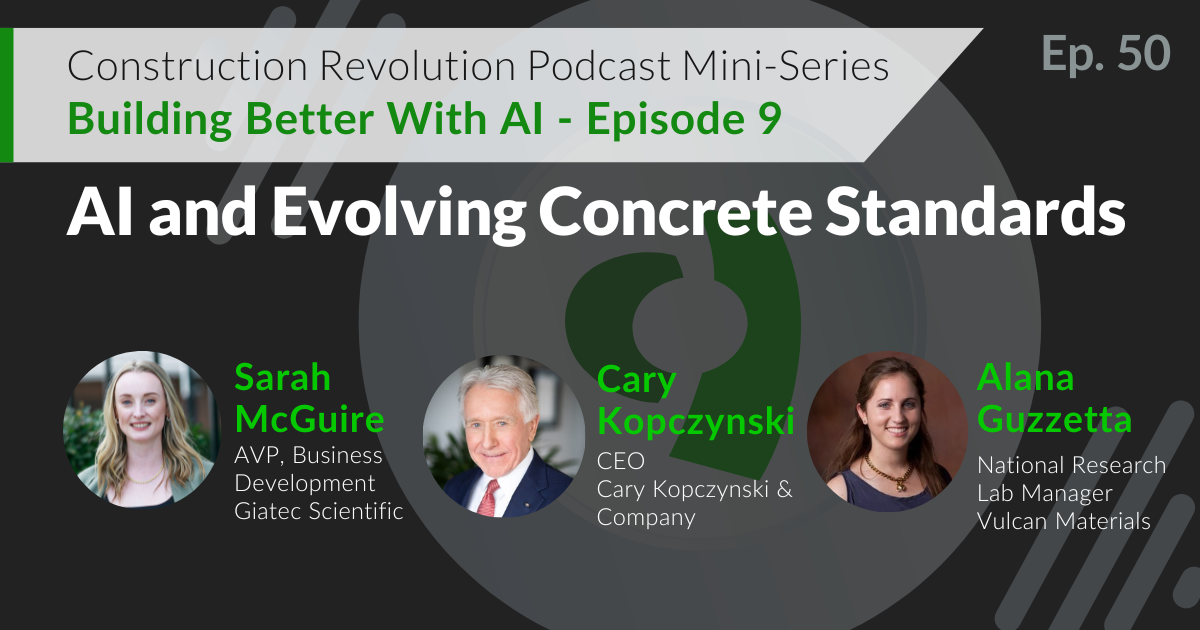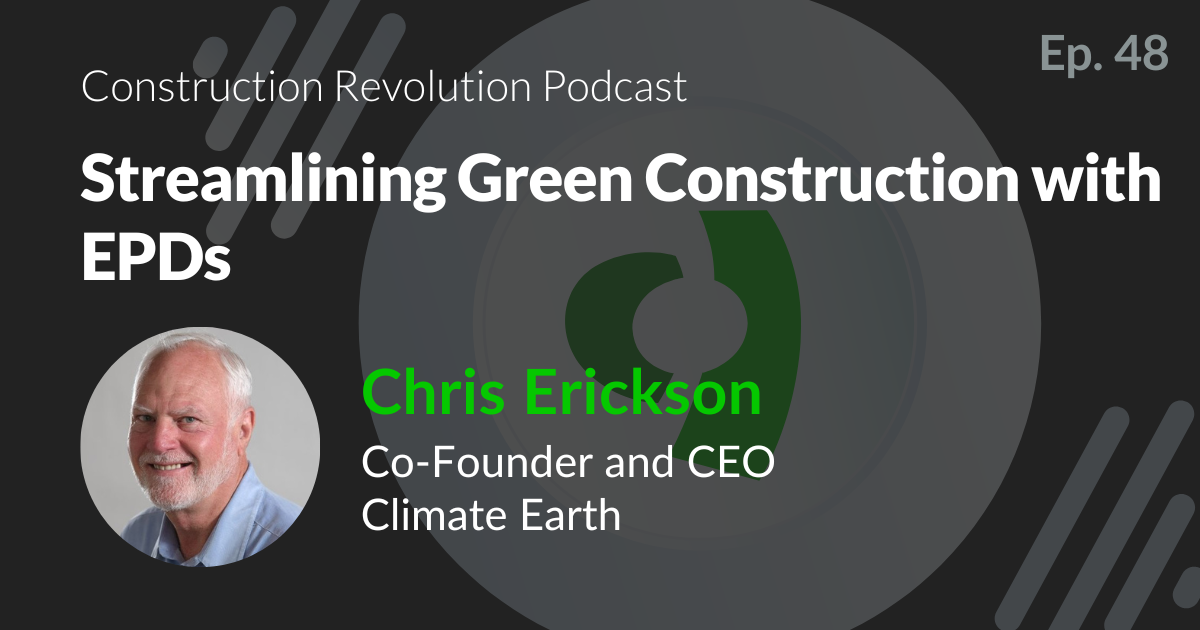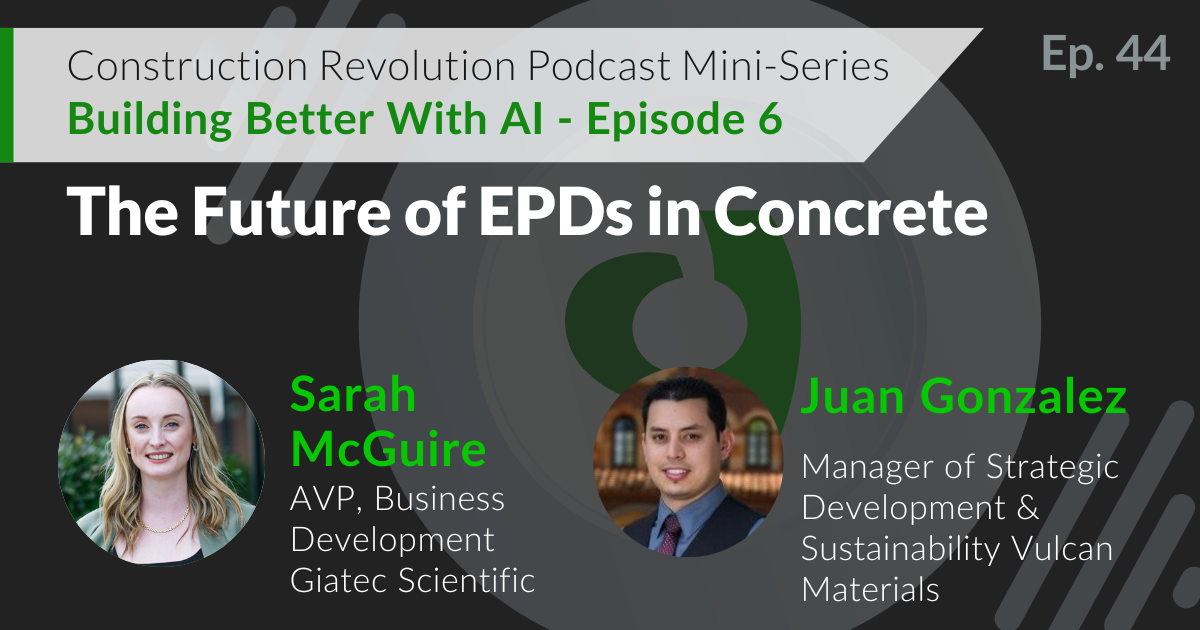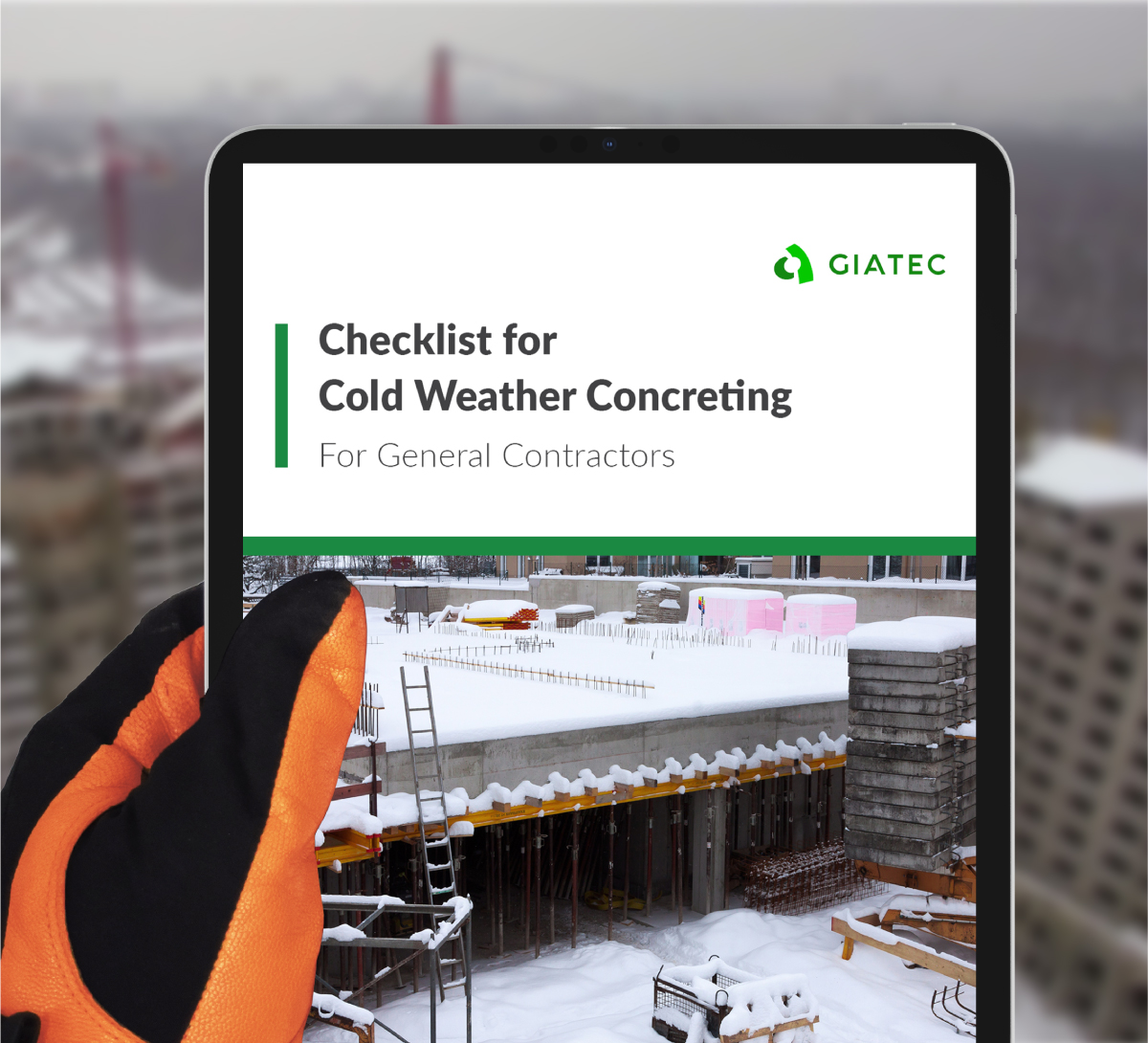
Episode 17 |
February 24, 2022
Making Coatings Sustainably
In This Episode
In this episode, we meet Brandon Carbol, CEO of Weatherskin Corporation. From carpentry to environmentally friendly construction solutions, Brandon's journey is one of innovation and unwavering dedication. Learn how he's shaping a sustainable future in the construction industry, all while maintaining an unshakeable work ethic. Join us for this inspiring episode of The Construction Revolution.

Host
Ian Wright
Content Marketing Manager, Giatec Scientific Inc.
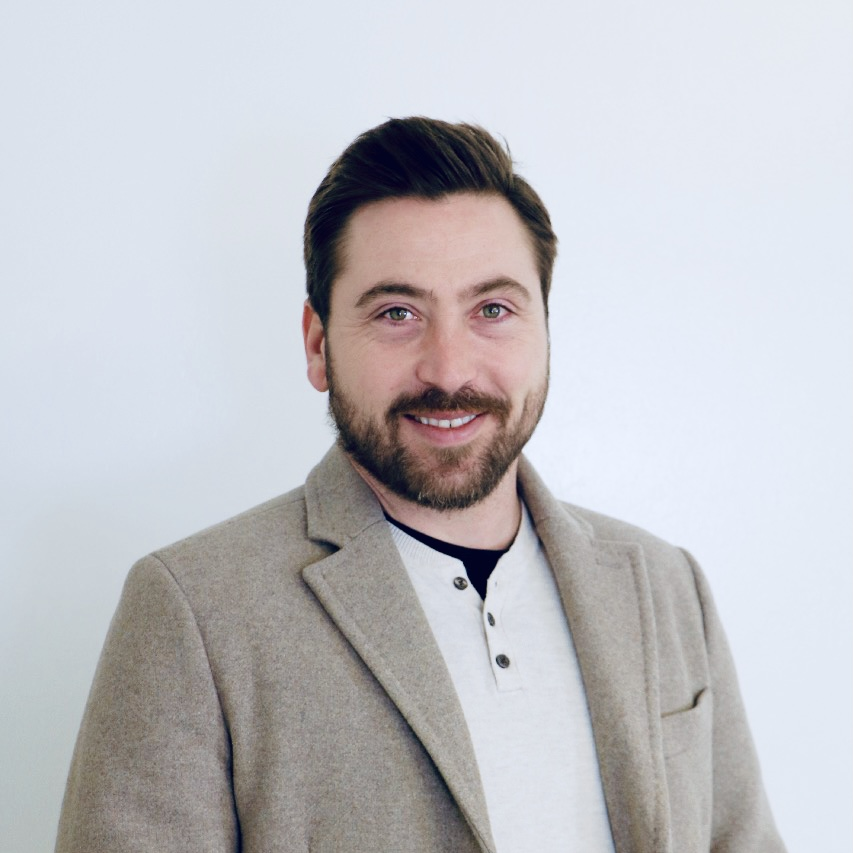
Guest
Brandon Carbol
President and CEO Weatherskin
Podcast Transcript
Ian Wright:
Hello and welcome to the Construction Revolution Podcast where we explore the trends, technologies, organizations and people that are changing what the construction industry will look like tomorrow. I’m Ian Wright. And today, I’m joined by Brandon Carbol, Co-founder and CEO of Weatherskin.
Weatherskin produces a suite of more than 40 eco-friendly elastomeric coatings including waterproof membranes, solar reflective roof coatings, epoxies, polyaspartics, polyurethanes and disinfectants. Their mission is to protect you, your project and everyone involved with it.
Brandon, welcome.
Brandon Carbol:
Good to meet you, Ian.
Ian Wright:
So, to start off, can you tell us a little bit about Weatherskin and the types of products that you offer?
Brandon Carbol:
Yeah. Sure, Ian. Thanks. Weatherskin is a construction coating manufacturer. And we offer all green eco-friendly coating products. And what I mean by that is we’re using acrylic and polymers in places of bitumens and rubbers and plastics and your typical solvents that you’d see in a lot of construction coatings.
So, we’re taking these highly caustic materials, replacing them with stuff that is a low-VOC, low-HAPs which I can explain later what those things mean. But essentially, it’s nearly zero emissions. And that’s what our products offer. And we’ve got a wide library of coatings, everything from roofing products to wall coatings to floor coatings for concrete. We have industrial spray-ons like for piping, tanks, vessels, liners.
So, there’s a big library. The difference about Weatherskin that sets us apart from everybody is when you come to our library, to our product offering, you know that you’re getting products that are code compliant when it comes to new environmental regulations that are being set and thresholds that are being set on these kinds of products.
Ian Wright:
And you have a fairly wide library of products if I understand correctly. Was it 40 or more or 400? How many is it?
Brandon Carbol:
Yeah. It’s north of 40, for sure. We have quite an array of coatings, and we have some disinfectant. We have some concrete additives now that are used to either waterproof or strengthen existing concrete, things that could be mixed right into the concrete or added later.
So, we’re ever expanding that library. And we’re always trying to stick to our key purpose which is an environmental alternative to the existing products that are out there. And we want that alternative to also perform better than what’s out there.
Ian Wright:
I imagine you’ve had a lot of interest in the disinfected coatings and it lasted a while, yeah?
Brandon Carbol:
Oh, absolutely. Yeah, there’s an interesting story behind that product. We had a stucco … We just needed a product to kill black mold and to be able to recommend to our clients where we do these washable rooms some sort of cannabis facilities. And we needed something to go in and clean these facilities afterwards.
So, we had a stucco and we were able to get this chemistry that after COVID-19 came out and happened, we sent a bunch of it to the French Quarter in Louisiana when they had a bad outbreak. It turns out it’s a really powerful disinfectant, and we got it tested on COVID-19. It had about the fastest kill time available on the market.
So, this little subsidiary product that we brought in turned out to be some really, really unique chlorine dioxide chemistry that nobody had seen. So, it’s a stabilized chlorine dioxide that can be used to disinfect, deodorize, anything from a hospital down to residential space.
Ian Wright:
I’m going to jump around a little bit here. Can you maybe … Let’s just start with I think maybe where we should have started. Can you tell us a little bit about yourself and about the Weatherskin? You’re the founder. So, just sort of tell us how the company came to be?
Brandon Carbol:
Yeah. And one of the founders, my partner is Marwan Hilal. And he and I have been friends since going back probably 10-11 years. And we used to do construction, private homebuilding together. And I ended up … I got injured. I fell off the ladder and just my back, too, but it was enough of an injury where I could not be out doing the work that I was doing day to day which a large component was carpentry.
And at that time, I’ve been working a lot with ICF block. It’s a foam that you fill with concrete and it’s a new type of foundation-building system. And to waterproof that system, we were always trying to wrap it with the peel and stick wrap. And we had always thought, “Hey, it was a spray-on that didn’t eat away and corrode the foam. That would be so much faster and so much better for the marketplace.”
Well, here I am sitting on my butt because I have this injury wondering what am I going to do with my life. And I thought I’m going to start to look and see what’s available in these different sectors in the industry. And I actually found strangely enough in the oil patch industry where they were using a really clean chemistry to waterproof their insulated tanks, above-ground tanks. And they were also using it on below-ground tanks.
So, I was able to procure that and get into more general construction for foundations. The waterproofing product was our first product. And I mean, waterproofing is seasonal so then everybody was saying, “Hey, what’s next? What do you guys going to bring on next?” So, we moved indoors and started doing the epoxies, polyurethanes, polyaspartic which are all different kinds of floor concrete coatings. And worked our way up the walls, on to the roofs and then into more specialty applications.
So, the company really started from a point of necessity. I kind of put myself in a corner and just asked, “Hey, what does the market need? And where’s the market going to?” We were seeing a lot of the early code changes happening and a lot of language that was coming out where the industry was gearing towards these low emissions, net-zero housing and that terminology was starting to really become more and more widespread.
So, we thought, “Hey, if we can get a product offering and get ahead of that and be part of that growth, that growth of new green technology, we felt we would have something there.”
Ian Wright:
That’s really interesting. So, you’re starting from essentially firsthand experience. You know what’s needed on the residential side. And then, bringing in knowledge from a very different area. You mentioned taking insights from the oil industry and applying those to residential and commercial construction. Do you work a lot with your clients, with your customers on developing new formulations? Do you go and ask them what they need and then act that way? Or are you looking more at where you see gaps in the market?
Brandon Carbol:
Both. But we absolutely work on filling those new market niches. For instance, I’ll go back to the cannabis. When the facility started, these pharmaceutical growth facilities started popping up a few years ago, the mindset was we have to build these to Health Canada’s standard like you would a hospital.
Well, what ended up happening, all these build systems that are used in hospitals don’t actually work in an environment where you have this internal humidity. A hospital doesn’t have a whole bunch of airborne water, all of it. So, systems that maybe were health grade or food grade, they weren’t meant to function in the environment that they were now in.
So, while everybody was looking at how do you build hospitals in North America, Weatherskin looked at what are the vertical farming industry, what is the vertical farming industry Europe been doing for the last 10 years? These guys have been growing into our crops for years and years. They deal with the exact same environmental factors.
So, what have they done? What kind of solutions had they found in order to keep these buildings operational and keep them free of mold and bacterial contamination, everything else that can happen with water infiltrating any of your building materials? So, that was how we developed our products for the cannabis sector.
There’s another interesting build material that’s been more and more commonly used called magnesium sheeting. And you see it. It has a super, super long burn time. And it’s a very eco-friendly board that would essentially replace drywall or OSB or plywood. The difference is the amount of safety that that product brings to a building when you consider that it takes hours to burn it down versus mere minutes.
So, potentially, it’s an environmentally-sound material and it’s a life-saving material. So, we wanted to have an offering for that product in that industry as well. So, we started working with basically every type of that board available, really getting to know it, really getting to create customized products for the specific boards and seeing which systems work, which didn’t.
One thing I should mention about Weatherskin is we are all about R&D and we probably throw away 99 out of 100 products that we try, because we were only interested in the best. If you’re going to take something to market, you have to certify it, you have to take it through a lot of testing or third-party testing. There’s no point in spending that money if you don’t believe that you have the best product for that usage because those standards are getting set higher and higher. And also, you don’t want the liability associated if you deliver a subpar product to market.
So, we believe that all we want to deliver is quality even if it extends the timeline on the R&D process and so that our customers know that they’re getting the best.
Ian Wright:
It’s clear that sustainability, that being eco-friendly is a big part of your company’s goal. I’ve heard it remarked that sustainability is a little like motherhood or apple pie. Nobody’s really against it. It’s a balancing act I think sometimes with other considerations. So, I’m curious about how you strike that balance between the economics of what you’re doing, the R&D research that you’re doing and your commitment to sustainability?
Brandon Carbol:
Yeah. That’s a good question, Ian. Well, if you consider the environmental impact, not only the immediate impact of saying using a caustic product … I mean, we’re seeing a lot of products get pulled from the market. You can no longer use lacquer in this country. There’s some thinners that are now gone.
And there’s more and more safety regulations being built around caustic products, like spraying anything that’s hot applied over seat. You now need to have scaffolds so you’re not spraying overhead and risking hot material falling back on your face. All these safety regulations that are designed immediately to protect the installer.
So, people are worried about the long-term effects on the installer, the cancer-causing agents that what are they breathing? I mentioned earlier VOCs and HAPs. And that’s a big part of our language when we’re talking about emissions and coatings. So, VOCs or volatile organic compounds that will leach off products.
So, over time, they’re coming off a product, maybe during curing or during its lifespan. And it’s leaching into whatever the environment is or whatever it’s in contact with. HAPs or hazardous airborne particles, so when somebody’s spraying this material, what is coming back at them in their eyes, in their mouth and getting into their system?
So, anything that we can do to eliminate both the short-term and the long-term effects of essentially using hazardous materials to build our buildings, to protect our environments that we live in, we see it as a long-term benefit for the user, the homeowner, the environment around it. And you’re right, it would be much easier to not do the research and not to bring clean tech products to the market.
There’s a lot of chemistry available that you can pick up and branding and put it on something. It’s very hard to find something that meets ISO standards, that meets the FDA regulations, that meets the Health Canada regulations on products. The CCMC is another certification where they determine the quality of a product, of a construction material in Canada. So, that’s something that we’re chasing actively right now.
So, the balance is there’s a lot more work on the front end, but there’s a lot more work for everybody involved in the backend, including us. And it might be that initially, we have a more expensive product variant for the same use. But as we produce that in larger volumes, we can generally bring this cleaner chemistry down to a competitive price where we are competitive in the market and we can outperform and sometimes outprice the competitors.
And it’s an ongoing thing. Being conscious of our environmental impact extends from not only how we produce the materials and then how are we packaging it? What is our recycling program for our containers? What are our containers made of? So, that’s where we’re stepping into. It’s a little bit of a new world that we’re stepping into.
And the next few years is really honing in on all the facets that affect our business and how can we think about sustainability when we think about our shipping, our packaging, our processing, and our internal operations and our business going paperless, things like that? So, it’s something where we’re always striving for.
Ian Wright:
Sure, yeah. I’m imagining you seeing sort of more and more demand from your customers to have that in your products as well in terms of sustainability and eco-friendliness. You mentioned shipping. And so, I’m curious to get your perspective on the ongoing issues that we’re seeing in the supply chain globally.
Obviously, you’re not making something that requires a microchip in every product but are you seeing disruptions there? Have you been affected significantly by that?
Brandon Carbol:
Well, our industry, the coatings industry was hit hard actually by the freeze in Texas. When Texas froze over, there’s actually a lot of outdoor storage of resins and a lot of the chemical components are used to make a variety of coatings, polyurethanes, polyaspartic, polymers. A lot of our industry really felt that hit.
The availability for products definitely, as a lot of them are coming now from overseas to pick up that lack of products that we lost in Texas. So, the industry definitely felt it. We were fortunate a lot of our raw goods are locally sourced as in Canadians or we have fairly healthy supply chains. So, we have been fortunate. We’ve had maybe 5% of our products see some slight increases in price due to things like even just the packaging, the plastic containers that our products come and the five-gallon pails.
I’d say the place that we felt it the most was the metal containers where our products need to come in metal five-gallon pails, a huge shortage of those. But like everybody, we are persevering. We’re finding. I think our supplier list has tripled or quadrupled. And we have backups to backups to backups for each product that we carry.
We’ve looked at it as a challenge and an exercise to really get to know our supply chain, and how to not only strengthen it but double or triple its size and really increase or strengthen our relationships that we have within the supply chain and then increasing the reach that we have within it as well. And it’s really broadened our contact base. So, we took it as a challenge and it’s been a good exercise and we benefited from.
Shipping, we’ve had a lot of problems with the…especially small carrier, medium-sized package. That shipping industry, we’re now pretty well sending anything LTL or full freight to our distributors or to our remote partners. Just because it’s almost seems that things are guaranteed to end up somewhere else or go missing or be destroyed if you send them small carrier right now.
Ian Wright:
Yeah, that’s for sure. I think probably, there’re very few people that have an experience with that in some form or another at this point. On the more sort of say optimistic side of things, I’m curious to know how are you feeling about the sort of landmark trillion-dollar infrastructure bill passed in the US? Are you anticipating greater demand for coatings as a result? Or how do you see that affecting Weatherskin?
Brandon Carbol:
Yeah. If you look at the interest globally, construction and manmade structures, and the infrastructure bill, it’s primarily roads and bridges and it falls right in line with this. So, by 2060, we’re supposed to have doubled the footprint of manmade structures on Earth that we currently have right now. And that’s a short amount of time. And that’s a lot of population and a lot of concrete and building materials.
And so, things aren’t slowing down. I see it as we are in a perfect storm, if you will, of these negative influences and impacts all colliding at once. But I see it as those are perfect breeding grounds for innovation and new companies and new technologies to take over. I am foreseeing that we will see some new technologies emerge in shipping and in constructions, the way that we build, the speed that we build, the efficiency in which we build, the way that we get materials to one another.
I’m seeing the next few years is an exciting next few years because there’s people out there thinking of solutions to homes that we have today. And we’re going to see them tomorrow.
Ian Wright:
Can you tell me a bit more about your customers? Do they generally know what they’re looking for when they come to you? Or are they looking for guidance, for advice? What’s the relationship like there?
Brandon Carbol:
Yeah, there’s a wide array. So, we’ve got one side of our business will be approached by engineers or architects that are looking for certain performance qualities of products and will fall in line with those and will be specified on a specific project for a specific application.
If it is somebody who is not necessarily part of the construction but they are the client, and they’re looking to use an ecofriendly product line and they found out about Weatherskin and heard really good feedback from our current customers, and they want to know more about our product offerings, definitely they’ll contact us or one of our distribution partners. And we can walk them through which product we would recommend for whatever application that they may have.
So, if they have a floor for instance, they have a building they need to do their concrete floor. We have multiple options. Some are good for areas where you’re going to have high-chemical spills like automotive bays. Some are good for where you need-high impact resistance because you have forklifts and everything else going over it.
If you’re in high humidity, we have products that are made to carrying high-humidity environments. So, we’ll really ask them a lot of questions about what is the environment, what are going to be the uses on that surface? And then, we’ll spec the appropriate product for them.
Ian Wright:
I’m curious about you personally. What gets you excited? What’s getting you out of bed in the morning and then coming into the office?
Brandon Carbol:
My team. We have got not only great strategic partners and industry partners, but our team here is like a family. I leave home to come home. Basically, in the morning, the dog comes with me. And he’s kind of the go-to feel-good mascot of the office.
And then everybody here, we care about each other and we care about what we do and we feel good about what we do, too. And that makes a big difference when you’re able to promote a product and a service and a business that its values are in line with your own personal values. And everybody around here, we all know that we can only do a little part but we’re all trying to do a little part to make this a better planet, and to also be of service. That’s it.
Everybody here is of the mindset that the only way we’re ever going to help ourselves is to help others. So, we really opened up conversations with new clients and new customers with not how can you help us, but how can we help you? What questions do you have? What concerns do you have? How can we go out of our way to make you feel like you’re protected? Because that’s actually our core value here at Weatherskin is just protection.
Our products offer protection to the buildings, to the environment, but we were able to offer protection to our clients in the way of offering the best solutions to their challenges.
Ian Wright:
I should ask, are you actually applying the coatings yourself or are you providing the coatings and then your clients are the ones that are actually administering them?
Brandon Carbol:
For the first three years or so, we had crews doing the applications because there’s a lot of R&D and then needing to understand not only the new systems but the existing ones that we had purchased. So, a lot of our systems had been around for quite a bit of time but weren’t being … They were built for one job and they were just sitting in a library.
So, we were able to acquire that and take it out into construction and into the mainstream. So, we’re very hands on. We all come from construction. So, we wanted to know how these things work and really get used to the system. So, we’re showing up on every job site. I still show up pretty well to every job site in Calgary. But now, we work with quite a few subcontractors that apply our coatings locally and then quite a few subs and larger GCs that web the products across North America.
We have gotten representation all the way to the southern states, Hawaii and East Coast Canada. So, we’re doing a big coatings project in the Arctic now. So, the Weatherskin personally, I can’t be on all those projects, but I love to be involved like this. Over an online chat, walk through the job sites using Zoom. That’s been … As annoying as Zoom was at the start of the pandemic, it’s been a great thing for being able to be in multiple places at one walk through and record jobs and essentially be on site when you’re in a different city. And it’s fantastic bit of technology once we got used to it.
Ian Wright:
Sure, yeah. You mentioned the Arctic there. I’m curious, what would you say is the most interesting project that Weatherskin has been a part of?
Brandon Carbol:
This one might add. I’d say the most interesting is there’s a project going on that is in New Orleans. There’s a big NASA facility called the Michoud Assembly Facility. And we’re down there walking on that roof. They’re trying to design a hurricane-proof roof for that facility.
Now, I think it’s scheduled for 2024. But being on that building and talking solution with the hearing firm that’s representing NASA was a pretty unique opportunity to get to walk through there and to hear about their problems and potentially be offering a Weatherskin solution. So, we’ll find out on that one.
The Arctic project itself is of prefab and modular housing actually. And then, the full building is up there as well. But our product line, we have a synthetic stucco that can be used to replace like the vinyl siding that they have on a lot of these homes. An issue with a lot of these modular homes and the vinyl siding is they get dropped into high-wind traffic areas. And that wind strips that siding right off and then subsequently, the tar paper or the vapor barrier behind it and you’re left with plywood on three sides of the home.
So, our solution is really effective in those high-wind areas, high-cold areas. It’s really good in those really low negative temperatures. So, the stucco application, it stays on the wall and it looks good. And more importantly, the coatings aren’t going to blow away like the vinyl or the paper. So, it’s a cool one to be part of right now.
Ian Wright:
Sure. So, I have to ask because I wonder about this when I saw that you were doing hurricane proofing. If I think of hurricane proofing, I’m thinking of more infrastructure structural changes. So, how do coatings help us with hurricane proofing?
Brandon Carbol:
So, we got involved with FEMA. They have something called the liquid tarp right now which is like a fabric that they put down over holes and roads that have been decimated by these hurricanes. And they put a liquid over it and it forms a patch. Now, that’s a temporary patch until the insurance can get in there to fix the roofs.
What happens in a lot of these hurricane-prone areas is there’s tornadoes on the proximity of the hurricanes or there’s really high gale force winds, and systems that have seams. So, if you think about wall shingles, there’s a certain amount of wind that can get under the seam of the shingle. Once it does and it catches it, it can pull up a whole run of whatever the build material is, whether it’s the SBS shingle or a tarp over paper or EPDM or PVC. Something like vinyl again can be lifted and pulled off by these high winds.
And seams are always where water finds a way. So, it’s a penetration or it’s a seam and that’s where your water’s coming into your building. So, the big thing with that project and with what we’re developing for hurricane-proof roof system is like our current roof system, it’s entirely seamless. We embed a fabric in the base coat of our system overlap that fabric. And then, there’s three more coats on top of it. So, there’s no edge that you can lift up with either PH or wind.
So, when those winds come in, there’s no susceptible area for it to grab and pull the system up. And that is really the culprit not that’s … Again, that’s where the water comes in. Now, on hurricanes, you get things like debris and hail. So, you need something that’s extremely durable, extremely puncture-resistant, impact-resistant. So, we have the only roofing product right now that has a hail-resistance up to two inch in diameter hail balls.
So, we’ve got that. We’ve got far-over industry standards for freeze-thaw meaning that we can go through things like the Calgary chinooks over and over again and it doesn’t affect the quality of the product. All these things become very important. When you consider the devastating nature of a hurricane, you really have to understand what are the factors and then test for those factors.
We’re not sending those off to labs and testing for regular 100-kilometer-an-hour windy day winds. We’re testing for hurricane grade winds and hurricane grade rains and hail.
Ian Wright:
Your location in Calgary, that’s going to be a pretty good spot to test a lot of extreme weather conditions, yeah?
Brandon Carbol:
Yes. Yeah. The temperature shocking that we experience here is probably the best place, maybe most frustrating place, too, for testing any kind of exterior-bound products and construction. You might have a product that performs good in the cold. You might have one that also performs good in the heat. Where Calgary is really unique, if all the listeners aren’t aware, is we get a weather phenomenon called a chinook.
We can have 20-30 degrees Celsius temperature swing in 24 hours up one way and back the other way. So, that shock causes a lot of expansion, contraction, stress on things, on build materials, on the coating. So, if you ever want to test something somewhere that can be pretty rough on the functionality and the life of a material testing, you have Calgary.
Ian Wright:
Brandon Carbol, Founder and CEO of Weatherskin, thanks very much for joining us today.
Brandon Carbol:
Yeah. Thank you so much for your time today, Ian. I appreciate it.
Other Related Episodes
Episode 50 |
October 3, 2024
AI and Evolving Concrete Standards
Our “Building Better with AI” mini-series is back by popular demand! Originally planned as an eight-episode series, the overwhelming response from our listeners has brought us back for more. Please join us for our ninth episode, “AI and Evolving Concrete Standards”! In this episode, we’re unpacking the challenges of concrete constructability, why industry stakeholders must improve communication, and how AI can help bridge this gap. Joining us are Cary Kopczynski, CEO, Cary Kopczynski & Company, and Alana Guzzetta, National Research Lab Manager, Vulcan Materials. Together, they explore the impact of evolving ACI standards on concrete performance, constructability, and sustainability, along with the major opportunities and challenges that AI presents as the industry advances. Filled with insights and a call to action for the entire industry, this episode is a must-listen for professionals eager to stay ahead in the concrete world. Tune in for a conversation that’s not just about keeping up with change but leading it!
Full McKinsey Report:
REINVENTING CONSTRUCTION: A ROUTE TO HIGHER PRODUCTIVITYPLAY
Episode 48 |
August 22, 2024
Streamlining Green Construction with EPDs
In this episode of The Construction Revolution Podcast, we welcome Chris Erickson of Climate Earth. Chris shares how the latest advancements in Environmental Product Declarations (EPDs) are transforming sustainability efforts in the construction industry. With his extensive knowledge in environmental impact data and sustainable practices, Chris delves into the innovative tools and solutions that are simplifying EPD creation and management for construction companies. Join us as Chris discusses how Climate Earth’s technology is making it easier for companies to measure and reduce their ecological footprint, ensuring compliance with regulatory requirements and enhancing their commitment to sustainability. Don’t miss this insightful conversation on the future of sustainable construction and the role EPDs play in leading the industry towards a greener future.
PLAY
Episode 44 |
June 13, 2024
The Future of EPDs in Concrete
In the sixth episode of the "Building Better with AI" mini-series, host Sarah McGuire delves into “The Future of EPDs in Concrete” with featured guest Juan Gonzalez, Manager of Strategic Development & Sustainability, Vulcan Materials. With a wealth of experience, Juan shares valuable insights into his journey within the field of sustainable construction and environmental practices. The conversation begins with an exploration of the history and evolution of Environmental Product Declaration (EPD) reporting, highlighting Vulcan Materials' pioneering efforts as the first company to produce EPDs with Climate Earth. Throughout the discussion, Sarah and Juan address questions surrounding the role of EPDs in modern construction. Juan elaborates on the motivations behind Vulcan Materials' early adoption of EPD reporting, the challenges faced in championing this initiative, and the regulatory standards that have been influential in driving EPD adoption further. Tune in now to gain valuable insights that could reshape your perspective on EPD reporting and drive meaningful change in the industry!
PLAY
Want to Be a Guest Speaker, Sponsor, or Just Have a Question for Us? Fill In the Form!

